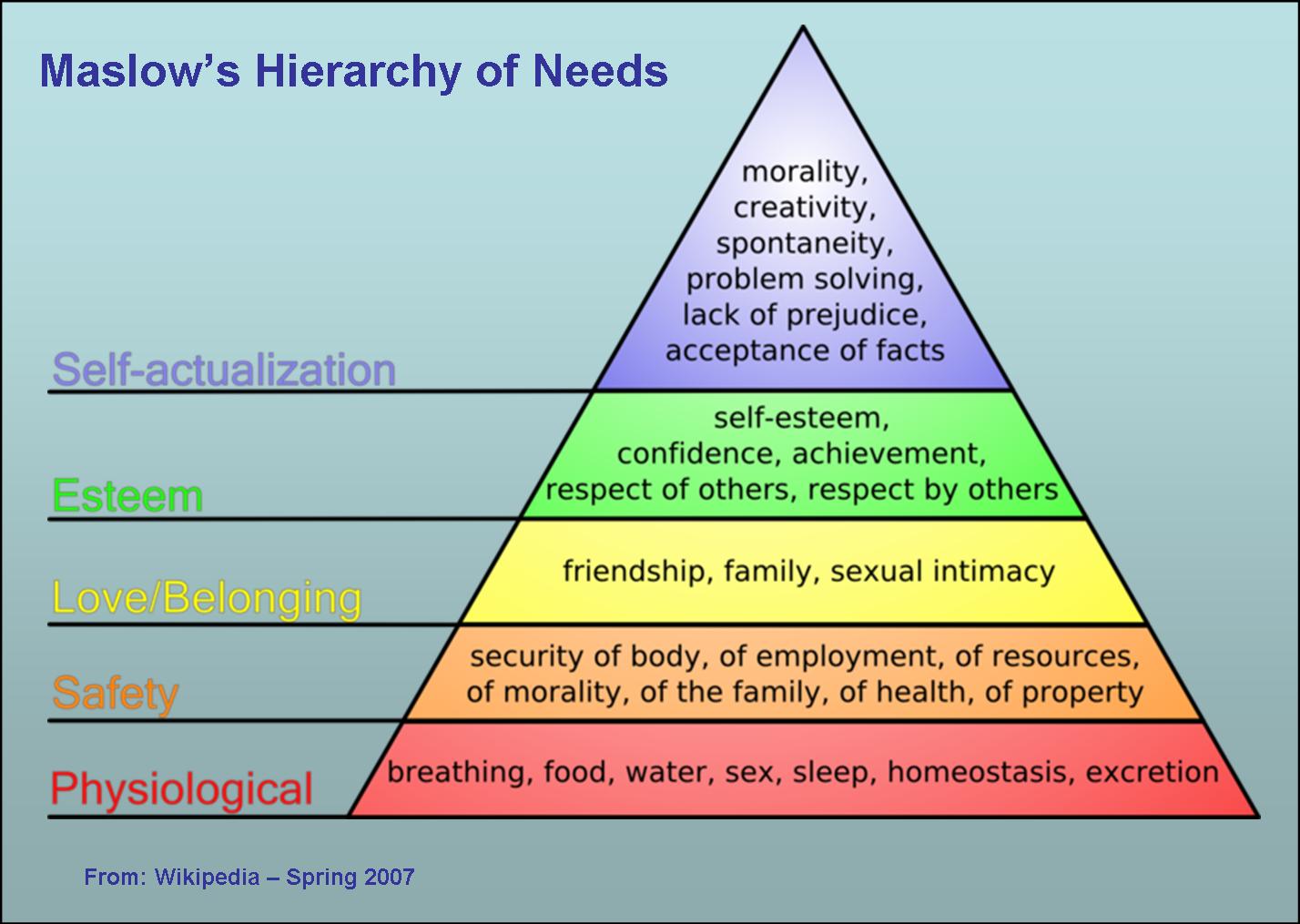Learning how to teach adults |
| Maslow believed that needs had to be fulfilled from the bottom up. So, if a learner is hungry or tired, do not expect her to care about respecting others. |
This video uses a familiar movie, Disney's Up, to demonstrate the levels of Maslow's Hierarchy in popular culture and human life, albeit a cartoon life.
Malcolm Knowles is one of the most well-known and cited experts on adult learning theory. You can read much more about him here:
Malcolm Knowles from casimmons
Children have certain needs in a learning environment which extend beyond only being taught to master content. Maslow’s hierarchy of needs is a valuable resource when helping adults understand children in general, but especially, a challenging child. When visualized as a pyramid, Maslow’s levels are, from the bottom up: physiological, safety, love/belonging, esteem, self-actualization. Maslow says a human being’s most fundamental needs are physiological – food, water, sleep, etc. The top of the pyramid are self-actualization needs – creativity, problem solving, acceptance of facts, etc. Maslow’s theory is that each level of the pyramid, from the bottom up, must be satisfied before the person can progress to engage in the next level.
Maslow’s
Hierarchy of Needs (2013) In Wikipedia. Retrieved from http://en.wikipedia.org/wiki/Maslow's_hierarchy_of_needs.
The most
fundamental and basic four layers of the pyramid contain what Maslow called
"deficiency needs" or "d-needs": esteem, friendship and
love, security, and physical needs. If these "deficiency needs" are
not met – with the exception of the most fundamental (physiological) need –
there may not be a physical indication, but the individual will feel anxious
and tense. Maslow's theory suggests that the most basic level of needs must be
met before the individual will strongly desire (or focus motivation upon) the
secondary or higher level needs.
(“Maslow’s
Hierarchy of Needs,” 2013)
While Maslow’s hierarchy does not
apply only to children, the needs represented by Maslow apply more importantly
to children than to adults, especially adults in a corporate setting. While it may not be unusual for a student to come to school hungry or extremely tired and therefore unable to learn until
those needs are met, it is unlikely an adult who comes to work and attends a
training session will have unmet physiological needs. Therefore, the teaching of adults will differ
from the teaching of children. To this
end, the work of Malcolm Knowles is quite instructive.
Malcolm Knowles might well be considered the
founding father of adult learning. He contrasted the “concept of andragogy,
meaning “the art and science of helping adults learn,”…with pedagogy, the art
and science of helping children learn” (Merriam & Caffarella, 1999, p.
272). Knowles’ original studies and writings arose from the assumption that
there are significant, identifiable differences between adult learners and
learners under the age of eighteen. Primarily, the differences, according to
Knowles, relate to an adult learner being more self-directing, having a
repertoire of experience, and being internally motivated to learn subject
matter that can be applied immediately – learning that is especially “closely
related to the developmental tasks of his or her social role” (p. 272).
Learning
Theories/Adult Learning Theories.
2013. Retrieved from http://en.wikibooks.org/wiki/Learning_Theories/Adult_Learning_Theories
Knowles’
work is very significant and helpful for anyone with a background in K-12
education who is moving into adult teaching and learning because his theory
identifies six keys every teacher of adults should constantly keep in mind and
refer to daily.
1. Adults
have a need to know why they should learn something.
2. Adults have a deep need to be self-directing.
3. Adults have a greater volume and different
quality of experience than youth.
4. Adults become ready to learn when they
experience in their life situations a need to know or be able to do in order to
perform more effectively and satisfyingly.
5. Adults enter into a learning experience with a
task-centered (or problem centered or life-centered) orientation to learning.
6. Adults are motivated to learn by both
extrinsic and intrinsic motivators.
Adapted
from: Knowles, M. (1996). Adult Learning. In Robert L. Craig (Ed.), The ASTD
Training and Development Handbook (pp. 253-264). NY: McGraw-Hill. Retrieved
from ftp://ftp-fc.sc.egov.usda.gov/NEDC/isd/adult_learning_theory.pdf
Former
K-12 educators make a mistake when they approach the teaching of adults in the
same manner that they approached their children students. Teaching adults is a very different
undertaking and should be given the same amount of thoughtfulness that all good
teachers spend in developing lessons for their students who are children. The goal of any adult training classes should
be to end up with satisfied adult learners who have
been engaged and benefitted by their time in a training session.
Resources:
Maslow’s Hierarchy of Needs (2013) In Wikipedia. Retrieved from http://en.wikipedia.org/wiki/Maslow's_hierarchy_of_needs.
Learning Theories/Adult Learning
Theories. 2013. Retrieved from http://en.wikibooks.org/wiki/Learning_Theories/Adult_Learning_Theories.
Adapted from: Knowles, M. (1996). Adult Learning. In
Robert L. Craig (Ed.), The ASTD Training and Development Handbook (pp.
253-264). NY: McGraw-Hill. Retrieved from ftp://ftp-fc.sc.egov.usda.gov/NEDC/isd/adult_learning_theory.pdf.
Carie, I enjoyed reading your blog. I specially liked that you included a Pixar video to explain Maslow's hierarchy of needs. Simply offering a suggestion that would alter the aesthetic appeal of the blog, I would recommend that you space out the videos/PowerPoint throughout the writing so that it is not word or visually heavy in the beginning or end of the blog.
ReplyDeletesmm panel
ReplyDeleteSMM PANEL
İŞ İLANLARI
instagram takipçi satın al
Hırdavatçı
www.beyazesyateknikservisi.com.tr
SERVİS
Tiktok hile
uc satın al
ReplyDeleteözel ambulans
nft nasıl alınır
yurtdışı kargo
en son çıkan perde modelleri
minecraft premium
lisans satın al
en son çıkan perde modelleri